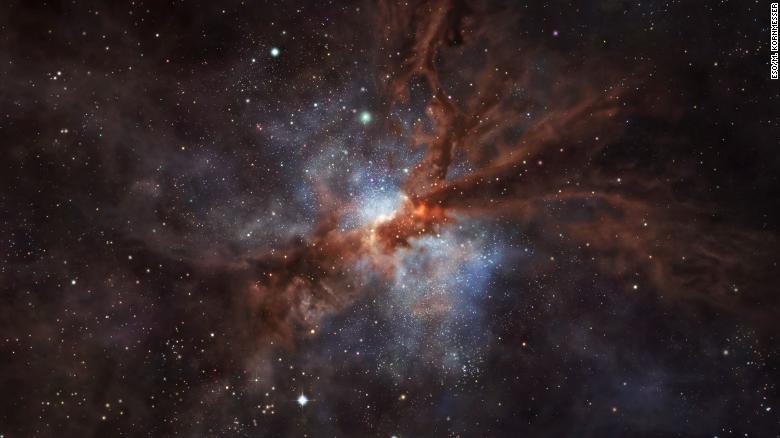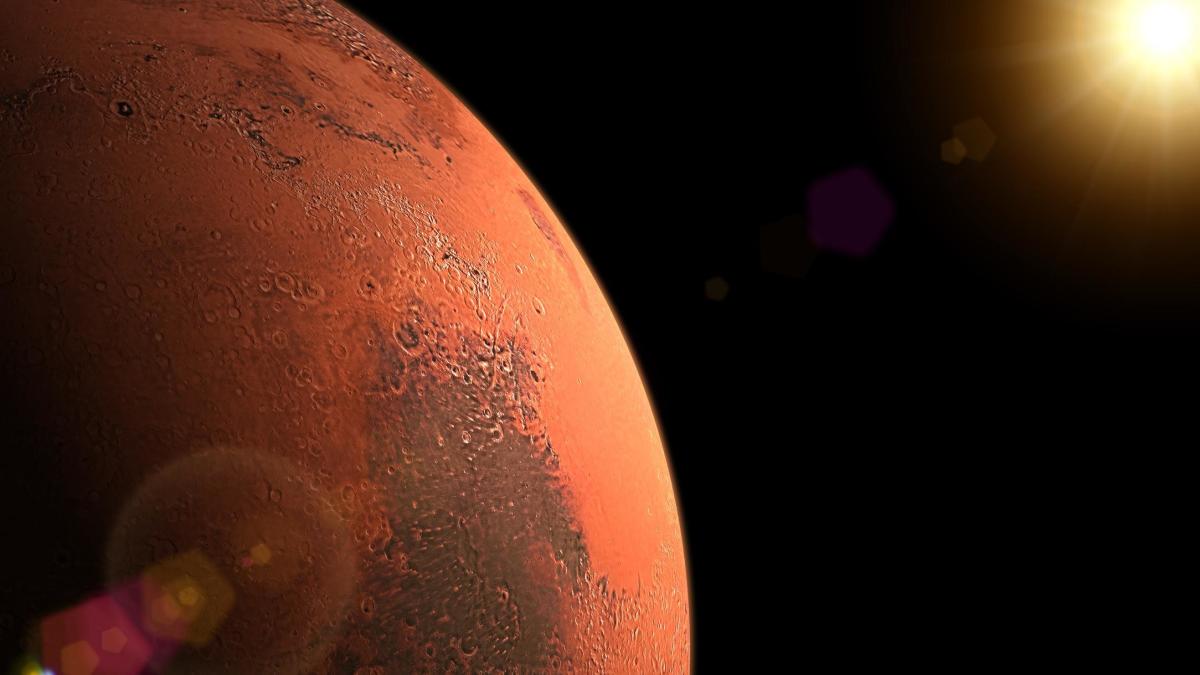(CNN) – As astronomer Carl Sagan once said, we are really made up of stars.
For the first time, astronomers have discovered an element found in our body in a galaxy 12 billion light years away.
The element fluorine is found as fluoride in our bones and teeth.
This artist’s idea is to show a galaxy forming a distant star 12 billion light years away. The researchers found fluoride in the gas clouds of NGP-190387.
Maximilian Franco, a postgraduate researcher in astronomy at the University of Hertfordshire in the United Kingdom, says, “Because fluoride is in the toothpaste we use every day, we all know about fluoride. We do not know what kind of stars in the universe produce the most fluoride!”
Elements found throughout our solar system, on Earth, and even in our own bodies appear within the centers of stars and emit them in stellar eruptions. But the mystery of how fluorine was formed within these stars remains.
The researchers used a team of telescopes Attakama Fluorine has been detected in the galaxy that produces incredibly distant stars in Chile.
The origin of the stars
Fluorine was the hydrogen fluoride in the gas clouds of the galaxy NGP-190387. The light from this galaxy has traveled more than 12 billion years to reach us, so astronomers are looking at the galaxy that appeared when the universe was only about 1.4 billion years old.
Researchers have suggested that fluoride-emitting stars around the universe may live faster and die younger, pointing to wolf-ray stars as their possible origin. These evolving stars are incredibly large, but they last only a few million years, a short period of time compared to the 13 billion years that our universe existed.
Only a handful of big stars evolve into Wolf-Riot as they approach the end of their lives. This condition can last a few million years, but in the life of a star, it is very rare. Only one in a hundred million stars is large enough to be Wolf-Rayet.
Previously, researchers thought that Wolf-Rayt stars were possible sources of fluoride, but this direct finding confirms this.
“Wolf-Riot stars are one of the biggest stars known, and they explode violently when they reach the end of their lives, helping us maintain good dental health,” Franco said.

This artist’s impression shows the bright center of the Wolf-Riot star surrounded by objects emitted by the star.
A study describing these findings was published Thursday in the journal Nature Astronomy.
Fluoride and the early universe
Other possible sources of fluoride considered by scientists include asymptotic giant branch stars, which are stars with a mass some times larger than our Sun. Does not explain the amount of fluoride detected in the distant galaxy.
“For this galaxy, it took only tens of thousands or hundreds of millions of years to have fluoride levels comparable to those found in stars in the Milky Way 13.5 billion years old. This is a completely unexpected result,” he said. Writer Siyaki Kobayashi, a professor at the University of Hertfordshire in a statement. “Our measurement adds completely new control to the appearance of fluoride, which has been studied for two decades.”
The detection of fluoride in such a distant galaxy expands the range of this element. Prior to this discovery, it was only found in our Milky Way and its neighbors, and in some distant quasars or bright celestial objects powered by supermassive black hole machines at the center of some galaxies.
But this finding puts fluoride as an element that existed at the beginning of the universe.
Researchers hope to monitor the galaxy using the largest telescope currently under construction in Chile, and observations are expected to begin in 2027, which could reveal more details about NGP-190387 and its mysteries.





